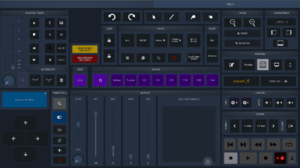Luke Davoll
New Member
I'm using Remote Control Editor now. There is 512 slots so large enough for what I'm looking for. I don't use it on VEP yet. No needs to send something to Cubase etc... It does check the value every time I select a track.
EDIT: Actually, it's 127 the limit because of midi. But there is 8 slots in the Quick Controls. Just have to create more "check". It should be something like 8x127 possibilities.
Thanks so much for your previous reply. Would you please add some more details how you get cubase to send a message to osc when a certain track is selected? Is it quick controls? What kind of parameter is needed? Do I need a transformer on my midi track? Or what do I do with the remote control editor!? A little confusing! But I thank you for taking the time to help us all out. This looks like metagrid on steroids!









